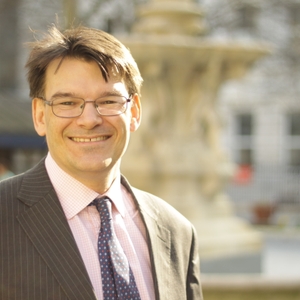
Study Highlight:
- A new rapid imaging protocol quickly and cheaply diagnosed heart ailments in patients in Peru.
Embargoed until 4 a.m. CT / 5 a.m. ET Wednesday, Aug. 29, 2018
DALLAS, Aug. 29, 2018 — A newly developed rapid imaging protocol quickly and cheaply diagnosed heart ailments in patients in Peru, according to new research in Journal of the American Heart Association, the Open Access Journal of the American Heart Association/American Stroke Association.
In Peru, cardiovascular disease affects 3.2 million (16 percent of the adult population), leading to a significant loss of well-being, estimated at 281,829 Disability Adjusted Life Years.
Current Cardiac Magnetic Resonance Imaging (CMR) usage in high income countries focuses on function, scar (fibrous tissue that replaces normal heart muscle tissue destroyed by injury or disease), perfusion, flow, mapping and angiography and delivers valuable clinical insights leading to targeted and precise treatments. However, these varied techniques make it slow (typically 45 minutes), expensive, complex and potentially out of reach for most people in the developing world.
In this study, researchers developed and tested a rapid CMR protocol using contrast dye that measured cardiac structure, function and scarring. The rapid diagnostics worked with existing infrastructure, took 18 minutes and cost $150 per patient resulting in important changes in patient care.
“Our CMR strategy was three to five times cheaper than current CMR exams in Peru,” said James C. Moon, M.D., study lead author and professor at Barts Heart Centre, St. Bartholomew’s Hospital in London. “It also can be delivered two to three times faster and is easier than conventional CMR.”
Researchers conducted scans on 98 Peruvian patients (average age 52, 60 percent female). Scanning found 26 percent had hypertrophic cardiomyopathy, 22 percent had dilated cardiomyopathy, 15 percent had ischemic cardiomyopathy (when cardiovascular disease or heart attack cause the disease), and uncovered 12 other pathologies including tumors, congenital heart disease, iron overload, amyloid plaques (abnormal protein deposits), genetic syndromes, inflamed vessels, clots and valve disease.
Researchers report CMR revealed an unsuspected new diagnosis in 19 percent of patients or led to a change of treatment in 37 percent. In 5 percent, a change in care management was suggested but not delivered due to access barriers (cardiac surgery or device therapy).
Researchers found rapid CMR satisfied all imaging needs in 89 percent of patients. In 7 percent where CMR was the first imaging technique performed, no further non-invasive imaging was needed. CMR did not miss any diagnoses initially found by echocardiography, researchers said.
“Because the rapid CMR protocol was embedded in clinical care with training and education, it resulted in important and frequent patient management changes that appeared beneficial for both patients and the healthcare system,” said Katia Menacho, Ph.D., study first author and cardiovascular science research fellow at Barts Heart Centre, St. Bartholomew’s Hospital in London. “Lack of resources is not a justification for the absence of key diagnostic tests in the developing world.”
In an accompanying editorial, Christopher M. Kramer, M.D., University of Virginia Health System in Charlottesville notes: “To make this proof-of-principle study a reality in much of the developing world, imagers will need to be trained at sites with appropriate scanner technology. Only in this way will an abbreviated protocol for evaluation of cardiomyopathies be implemented. This is an exciting time for the potential of broadening the impact of CMR throughout the developing world.”
Other co-authors are Sara Ramirez, M.D.; Pedro Segura, M.D.; Sabrina Nordin, M.B.S.; Amna Abdel-Gadir, M.B.S.; Vileta Illatopa, M.D.; Anish Bhuva, M.B.S.; Giulia Benedetti, M.D.; Redha Boubertakh, Ph.D.; Pedro Abad, M.D.; Bertha Rodriguez, M.D.; Felix Medina, M.D.; Thomas Treibel, Ph.D., M.D.; Mark Westwood, M.D.; Juliano Fernandes, Ph.D.; Malcolm Walker, M.D.; and Harold Litt, Ph.D. Author disclosures are on the manuscript.
The United Kingdom Foreign & Commonwealth Office; the Peruvian Scientific, Technological Development and Technological Innovation; the Univerisity College London Biomedical Research Centre; and the University College London Special Trustees’ Charity funded the study.
Additional Resources:
###
Statements and conclusions of study authors published in American Heart Association scientific journals are solely those of the study authors and do not necessarily reflect the association’s policy or position. The association makes no representation or guarantee as to their accuracy or reliability. The association receives funding primarily from individuals; foundations and corporations (including pharmaceutical, device manufacturers and other companies) also make donations and fund specific association programs and events. The association has strict policies to prevent these relationships from influencing the science content. Revenues from pharmaceutical and device corporations and health insurance providers are available at https://www.heart.org/en/about-us/aha-financial-information.
About the American Heart Association
The American Heart Association is devoted to saving people from heart disease and stroke – the two leading causes of death in the world. We team with millions of volunteers to fund innovative research, fight for stronger public health policies and provide lifesaving tools and information to prevent and treat these diseases. The Dallas-based association is the nation’s oldest and largest voluntary organization dedicated to fighting heart disease and stroke. To learn more or to get involved, call 1-800-AHA-USA1, visit heart.org or call any of our offices around the country. Follow us on Facebook and Twitter.
For Media Inquiries and AHA/ASA Spokesperson Perspective: 214-706-1173
Karen Astle: 214-706-1392; karen.astle@heart.org
For Public Inquiries: 1-800-AHA-USA1 (242-8721)
heart.org and strokeassociation.org






Leave a Reply